 Today I welcome Gail Langer Karwoski to Best Dog Books, a blog that features interviews with authors who’ve written a canine story for kids or young adults. Gail is here to talk about Seaman, the Dog Who Explored the West with Lewis and Clark, which is a middle grade historical novel published by Peachtree Publishers for kids aged 8-12.
Today I welcome Gail Langer Karwoski to Best Dog Books, a blog that features interviews with authors who’ve written a canine story for kids or young adults. Gail is here to talk about Seaman, the Dog Who Explored the West with Lewis and Clark, which is a middle grade historical novel published by Peachtree Publishers for kids aged 8-12.
Best Dog Books: Who is your key dog character(s) and what kind of dog is he/she?
Seaman is my key dog character, and he was a Newfoundland.
Newfoundlands are one of the largest dog breeds. They are first cousins to Labrador Retrievers. While Labs were bred to work on land, Newfies were bred for water work. Newfies are natural swimmers, with a double coat of fur so they can survive longer in cold waters.
Best Dog Books: Tell us about your story.
My story is historical fiction. It’s based on an event in American history called the Lewis and Clark Expedition.
Lewis and Clark were explorers, and this was the most famous camping trip in our history. There really was a big black Newfie who traveled with their expedition. So, if you’re the kind of reader who likes dogs, camping, adventure, or history, this is the book for you!
 Seaman belonged to Meriwether Lewis, co-captain of the expedition. In 1803, when my story begins, Thomas Jefferson was the United States President, and our country occupied the eastern half of the North American continent. We’d just bought a large section of western North America from the French; this purchase was called the Louisiana Purchase. Since there were no maps of the territory that we’d bought, President Jefferson organized an exploring trip called the Lewis and Clark Expedition. The job of the explorers was to travel from St. Louis (which was at the western frontier of our country) all the way to the Pacific Coast, and back again. The expedition lasted until 1806. Since there were no cameras back then, the explorers kept journals where they wrote logs and made maps and sketches of the wilderness that they traveled through, so they could share their experiences with other U.S. citizens.
Seaman belonged to Meriwether Lewis, co-captain of the expedition. In 1803, when my story begins, Thomas Jefferson was the United States President, and our country occupied the eastern half of the North American continent. We’d just bought a large section of western North America from the French; this purchase was called the Louisiana Purchase. Since there were no maps of the territory that we’d bought, President Jefferson organized an exploring trip called the Lewis and Clark Expedition. The job of the explorers was to travel from St. Louis (which was at the western frontier of our country) all the way to the Pacific Coast, and back again. The expedition lasted until 1806. Since there were no cameras back then, the explorers kept journals where they wrote logs and made maps and sketches of the wilderness that they traveled through, so they could share their experiences with other U.S. citizens.
Oh, the wilderness they experienced was beautiful, abundant, and dangerous! The explorers encountered all kinds of animals and plants. They were the first American citizens to encounter a grizzly bear, for instance, and they were astounded by how bold and ferocious these bears were. They were also the first to observe a prairie dog; they called them “barking squirrels”! Plus, the explorers met dozens of Native American tribes; some were friendly, others were threatening.
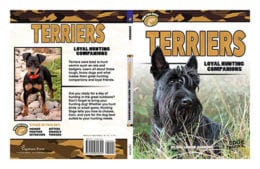 Seaman was the only dog who went on the trip. He was more than just a friendly companion. He helped the explorers hunt for food. He guarded their camp at night. The explorers valued him as a trusted member of their group. Just like the human explorers, Seaman was brave and loyal, even during scary moments. Once, he was injured and nearly died of a bite wound when he was retrieving game for the explorers.
Seaman was the only dog who went on the trip. He was more than just a friendly companion. He helped the explorers hunt for food. He guarded their camp at night. The explorers valued him as a trusted member of their group. Just like the human explorers, Seaman was brave and loyal, even during scary moments. Once, he was injured and nearly died of a bite wound when he was retrieving game for the explorers.
Best Dog Books: What inspired you to write this story?
I love dogs, and I love to learn about unusual moments in history. When my editor told me that there was a dog member of this expedition, I knew that I’d enjoy learning about Seaman. Since the explorers kept journals, I could read about their adventures in their own words, so I felt like I was experiencing the American wilderness along with them.
 Best Dog Books: What was the biggest challenge you had writing your story? How did you overcome it?
Best Dog Books: What was the biggest challenge you had writing your story? How did you overcome it?
It takes a long time to research and write a book. I was teaching when I began writing this story, but I needed more time to complete it, so I finished the school year but didn’t renew my contract. Then I found myself working by myself at home every day, and I missed interacting with students and other teachers. I missed moving around the school campus and doing a variety of activities with the kids.
When I got discouraged or restless, I’d take walks around my neighborhood and pretend that I was walking through the wilderness with Seaman. Sometimes, when I was stuck in a scene, I’d pretend I was one of the characters and talk out loud to another character.
Best Dog Books: What kind of story can we expect next from you? Is it about a dog? If so, what can you tell us about it?
I’m a restless person, so I like to try new things. I’ve got fifteen published books – novels, nonfiction, picture books, even a board book for toddlers!
I did write two other historical novels that star a dog character: Quake! Disaster in San Francisco, 1906! And When Hurricane Katrina Hit Home. Both of these books tell about an actual event in American history. Quake! Was awarded the Maxwell Medal for Best Children’s Book by the Dog Writers Association
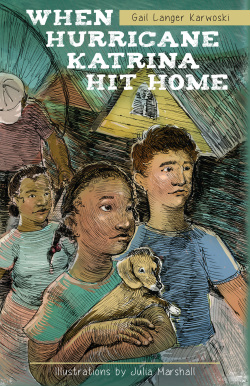 Quake! Is the story of the most powerful earthquake that ever struck a heavily populated United States city – San Francisco. In my story, the main character – a boy named Jacob – gets separated from his family during the earthquake. Together with a stray dog, Jacob searches for his dad and little sister as he tries to survive life on the streets of his destroyed city.
Quake! Is the story of the most powerful earthquake that ever struck a heavily populated United States city – San Francisco. In my story, the main character – a boy named Jacob – gets separated from his family during the earthquake. Together with a stray dog, Jacob searches for his dad and little sister as he tries to survive life on the streets of his destroyed city.
Hurricane Katrina is about the storm that struck New Orleans. Two different characters tell this story: Chazz, a boy from the wealthier part of the city, and Lyric, a girl from a poor neighborhood. Their families get stranded in an attic as water floods the streets. At first, the children don’t like each other, and the only thing they share is their love for a little Dalmatian. But eventually, they learn to appreciate each other’s talents, and, working as a team, they save their families.
Best Dog Books: What else would you like us to know about you or your story?
When I began to write Seaman, I thought that I was writing a book about history that happened to have a dog in it. But young readers quickly let me know that it was the other way around: I wrote a book about a dog that happened to take place in history!
I used real historical figures as the characters in this novel. But when I wrote Quake! and Hurricane Katrina, I based my stories on real events but I made up most of the characters. After writing Seaman, I learned that readers would enjoy my novels more if there was an important dog character, so I made up fictional dogs for these books.
A lot of readers have pet dogs, and other kids wish they had a dog. Most kids (and grownups!) believe their dog is clever enough to understand what they say and how they feel. Everybody thinks their dog is a hero and would save them from danger, like Seaman.
Dogs wag their tails and introduce us to strangers on the street. That’s what they do in a novel, too – they invite the reader to join the fun and get to know the characters.
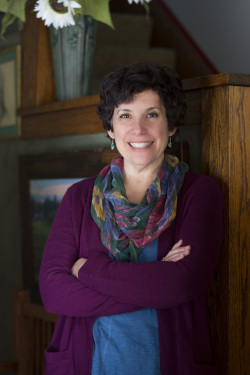 Best Dog Books: What advice would you give to aspiring writers?
Best Dog Books: What advice would you give to aspiring writers?
Think of your story as a journey: Before you set out, decide who is going on the trip (your characters), where they are starting from, and where they are going to end up. If you don’t know your “destination,” you won’t know which direction to take and when to turn – so you may get frustrated and lost while you are writing.
And, just like a journey, take it one mile (one paragraph, one page, one scene) at a time. If you try to “drive” (accomplish) the whole journey at one sitting, you may get tired and discouraged.
Include a dog in your story if you can. You’ll have more fun on your writing journey if a dog is along. And your reader will have more fun, too!
If you’d like to learn more about Gail Langer Karwoski, you can check out her author website.
Thank you, Gail, for joining us at Best Dog Books. We look forward to reading your book!
For other great books about dogs, check out 101 Best Dog Books for Kids.
For published authors and unpublished authors, check out our writing contests.

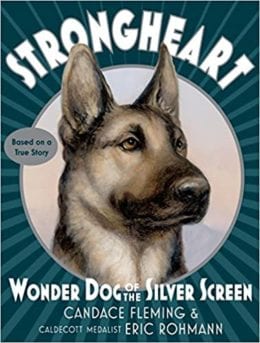 Today I welcome Candace Fleming and Eric Rohmann to Best Dog Books, a blog that features interviews with authors and illustrators who’ve published a canine story for kids or young adults. Candy and Eric are here to talk about Strongheart: Wonder Dog of the Silver Screen which is an illustrated, middle grade novel published by Schwartz-Wade Books/ Random House for kids aged 8-12.
Today I welcome Candace Fleming and Eric Rohmann to Best Dog Books, a blog that features interviews with authors and illustrators who’ve published a canine story for kids or young adults. Candy and Eric are here to talk about Strongheart: Wonder Dog of the Silver Screen which is an illustrated, middle grade novel published by Schwartz-Wade Books/ Random House for kids aged 8-12. The story goes like this: Taken from his litter as a puppy, Strongheart (whose name was Etzel at the time) was sent to Berlin where he was trained to become the fiercest dog on the police force. Sadly, in those days (1919) dogs weren’t trained with love or kindness. He became ferocious and incredibly well trained, but he didn’t receive any loving, human contact. He didn’t know how to play. He didn’t know what it was like to be petted. He lived this sad life until movie director Larry Trimble found him and took him to live in the Hollywood Hills. Trimble had been on a search for the perfect dog because he’d had a crazy idea – movies with a dog as the leading man. Nowadays, of course, this is hardly an original idea, but in the 1920’s when movies were still a brand-new technology, it was a crazy, ingenious idea. When he found Etzel he immediately knew he’d found his star. So he changed the dog’s name to Strongheart (a name with way more star power). And while his girlfriend, Jane Murfin, wrote a screenplay, Larry got to work rehabilitating Strongheart. And this is true! He had to teach the dog how to play… and how to accept food from a person’s hand… and how to enjoy a belly rub… and eventually how to love being loved. Strongheart had found his forever family!
The story goes like this: Taken from his litter as a puppy, Strongheart (whose name was Etzel at the time) was sent to Berlin where he was trained to become the fiercest dog on the police force. Sadly, in those days (1919) dogs weren’t trained with love or kindness. He became ferocious and incredibly well trained, but he didn’t receive any loving, human contact. He didn’t know how to play. He didn’t know what it was like to be petted. He lived this sad life until movie director Larry Trimble found him and took him to live in the Hollywood Hills. Trimble had been on a search for the perfect dog because he’d had a crazy idea – movies with a dog as the leading man. Nowadays, of course, this is hardly an original idea, but in the 1920’s when movies were still a brand-new technology, it was a crazy, ingenious idea. When he found Etzel he immediately knew he’d found his star. So he changed the dog’s name to Strongheart (a name with way more star power). And while his girlfriend, Jane Murfin, wrote a screenplay, Larry got to work rehabilitating Strongheart. And this is true! He had to teach the dog how to play… and how to accept food from a person’s hand… and how to enjoy a belly rub… and eventually how to love being loved. Strongheart had found his forever family! Strongheart was awash in gifts and letters from his fans. They sent him bones… and rubber balls… and golf clubs… and a new car. True!! He sent them back his photo complete with his “pawtograph.” He visited orphanages and hospitals and went on cross-country tours where he was paraded down Main Street and mayors gave him the key to the town. Did you know the first national brand dog food was named after him? Yup! Strongheart Dog Food. It’s still around today.
Strongheart was awash in gifts and letters from his fans. They sent him bones… and rubber balls… and golf clubs… and a new car. True!! He sent them back his photo complete with his “pawtograph.” He visited orphanages and hospitals and went on cross-country tours where he was paraded down Main Street and mayors gave him the key to the town. Did you know the first national brand dog food was named after him? Yup! Strongheart Dog Food. It’s still around today. Eric: I grew up with German Shepards and so have always had a fondness for the breed. I loved this story from the first time Candy showed it to me and I shared her idea to have the narrative told not only with her text, but with pictures as well. To help the editor understand what we were thinking about I took the first chapter of the book and told some of the story wordlessly, making sequences of pictures much like one would illustrate a picture book. We all liked it and and got to work.
Eric: I grew up with German Shepards and so have always had a fondness for the breed. I loved this story from the first time Candy showed it to me and I shared her idea to have the narrative told not only with her text, but with pictures as well. To help the editor understand what we were thinking about I took the first chapter of the book and told some of the story wordlessly, making sequences of pictures much like one would illustrate a picture book. We all liked it and and got to work.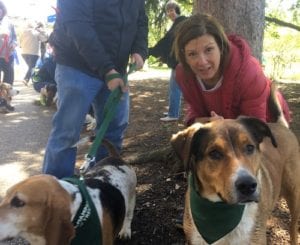 Eric: So many challenges arise when you are making pictures for a book! It was essential that I capture Strongheart’s intelligence and nobility, without drifting too far into anthropomorphism. I had to make images that simply did not decorate or repeat what was being said in the text. I had to make sure I did my research and everything I drew was of his time. At one point in the story we see a hair drier and indeed the first electric hair driers were on the market in the early 1920’s
Eric: So many challenges arise when you are making pictures for a book! It was essential that I capture Strongheart’s intelligence and nobility, without drifting too far into anthropomorphism. I had to make images that simply did not decorate or repeat what was being said in the text. I had to make sure I did my research and everything I drew was of his time. At one point in the story we see a hair drier and indeed the first electric hair driers were on the market in the early 1920’s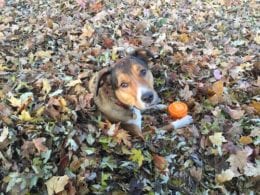 Best Dog Books: What else would you like us to know about you or your story?
Best Dog Books: What else would you like us to know about you or your story? Best Dog Books: What advice would you give to aspiring writers and illustrators?
Best Dog Books: What advice would you give to aspiring writers and illustrators? Today I welcome Candace Fleming to World Reads, a blog that features interviews with authors who’ve written a story set outside of the United States for children or young adults. Candy has published The Family Romanov: Murder, Rebellion and the Fall of Imperial Russia by Schwarz-Wade Random House which is YA nonfiction set in Russia for kids 12 and up.
Today I welcome Candace Fleming to World Reads, a blog that features interviews with authors who’ve written a story set outside of the United States for children or young adults. Candy has published The Family Romanov: Murder, Rebellion and the Fall of Imperial Russia by Schwarz-Wade Random House which is YA nonfiction set in Russia for kids 12 and up. I remember being fascinated by Anastasia. My daughters were too. Smart that you ask your target audience what interests them. Are you connected to the setting of your story?
I remember being fascinated by Anastasia. My daughters were too. Smart that you ask your target audience what interests them. Are you connected to the setting of your story? Let me warn you, it’s an involved answer. Ready? Brace yourself because here goes: My research follows four distinct paths. The first path is primary research. After all, the heart of all research is the firsthand accounts and eyewitness testimonies of those who lived through an historical event. And so I read reminiscences written by the children’s’ tutors, by Alexandra’s ladies-in-waiting and by Nicholas’ courtiers. I delved into the royal family’s letters and diaries and other personal papers. I read Yakov Yurovsky’s chilling account of the murders; statements from the guards; depositions from the priests and cleaning women who visited the Romanovs in their last hours. All of it was so personal, so intimate. If you think about it, primary research really is the height of nosiness… and probably the reason I love it so much. I get to be part detective, piecing together testimony from all that conflicting testimony; part gossip, reporting on all the juicy details I uncover.
Let me warn you, it’s an involved answer. Ready? Brace yourself because here goes: My research follows four distinct paths. The first path is primary research. After all, the heart of all research is the firsthand accounts and eyewitness testimonies of those who lived through an historical event. And so I read reminiscences written by the children’s’ tutors, by Alexandra’s ladies-in-waiting and by Nicholas’ courtiers. I delved into the royal family’s letters and diaries and other personal papers. I read Yakov Yurovsky’s chilling account of the murders; statements from the guards; depositions from the priests and cleaning women who visited the Romanovs in their last hours. All of it was so personal, so intimate. If you think about it, primary research really is the height of nosiness… and probably the reason I love it so much. I get to be part detective, piecing together testimony from all that conflicting testimony; part gossip, reporting on all the juicy details I uncover.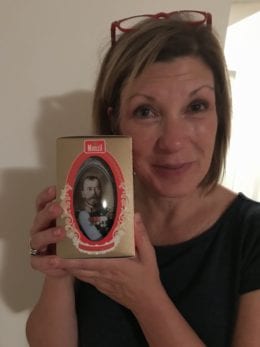 My third research path take me to experts – scholars, historians, and other writers. Experts, I’ve learned, are incredibly generous. All my nonfiction titles have been immeasurably improved by their time and effort. But no one was more helpful than Dr. Mark Steinberg, professor or Russian, East European and Eurasian studies at the University of Illinois at Champaign-Urbana. In the course of my own research, I’d come to rely on Dr. Steinberg’s work – his accessible histories of Russia, his impeccable translations of documents recently released from the Russian archives, his re-examination of Nicholas’ leadership abilities, his new and brilliant scholarship on Lenin. Can you tell I’m a fan? So as the first draft of the book neared completion I approached him tentatively. More than anything, I wanted him to read what I’d written. I wanted his opinion and knowledge. I wrote him, explaining my purpose and my readership. Then I crossed my fingers and hoped he’d answer. He did… enthusiastically. Over the course of the next six months, he read my draft, made suggestions, pointed out errors, suggested more appropriate source material and forced me to look at the evidence in different ways. He sent along books and articles he believed would help in my work. He re-read portions of the book I’d reworked based on his comments, and patiently answered what must have felt like a tireless stream of questions throughout the entire publication process. That’s generosity!
My third research path take me to experts – scholars, historians, and other writers. Experts, I’ve learned, are incredibly generous. All my nonfiction titles have been immeasurably improved by their time and effort. But no one was more helpful than Dr. Mark Steinberg, professor or Russian, East European and Eurasian studies at the University of Illinois at Champaign-Urbana. In the course of my own research, I’d come to rely on Dr. Steinberg’s work – his accessible histories of Russia, his impeccable translations of documents recently released from the Russian archives, his re-examination of Nicholas’ leadership abilities, his new and brilliant scholarship on Lenin. Can you tell I’m a fan? So as the first draft of the book neared completion I approached him tentatively. More than anything, I wanted him to read what I’d written. I wanted his opinion and knowledge. I wrote him, explaining my purpose and my readership. Then I crossed my fingers and hoped he’d answer. He did… enthusiastically. Over the course of the next six months, he read my draft, made suggestions, pointed out errors, suggested more appropriate source material and forced me to look at the evidence in different ways. He sent along books and articles he believed would help in my work. He re-read portions of the book I’d reworked based on his comments, and patiently answered what must have felt like a tireless stream of questions throughout the entire publication process. That’s generosity!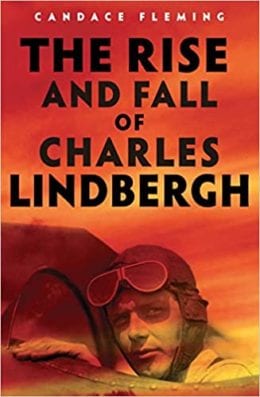 What kind of story can we expect next from you? Is it set outside of the United States? If so, where? And what is it about?
What kind of story can we expect next from you? Is it set outside of the United States? If so, where? And what is it about? What advice would you give aspiring writers?
What advice would you give aspiring writers? Today I welcome Audrey Mackaman to Best Dog Books, a blog that features interviews with authors who’ve written a canine story for kids or young adults. Audrey is here to talk about Cavall in Camelot which is a middle grade fantasy series published by HarperCollins for kids aged 8-12.
Today I welcome Audrey Mackaman to Best Dog Books, a blog that features interviews with authors who’ve written a canine story for kids or young adults. Audrey is here to talk about Cavall in Camelot which is a middle grade fantasy series published by HarperCollins for kids aged 8-12.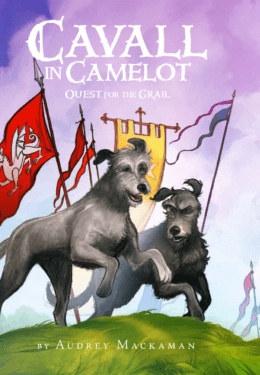 Best Dog Books: Tell us about your story.
Best Dog Books: Tell us about your story.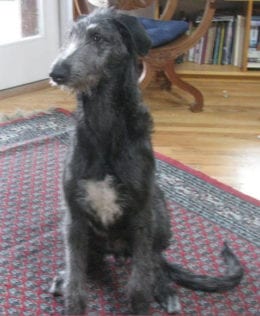 Best Dog Books: What inspired you to write this story?
Best Dog Books: What inspired you to write this story?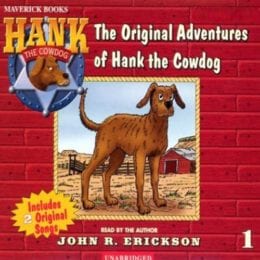 Best Dog Books: What else would you like us to know about you or your story?
Best Dog Books: What else would you like us to know about you or your story? Best Dog Books: What advice would you give to aspiring writers?
Best Dog Books: What advice would you give to aspiring writers?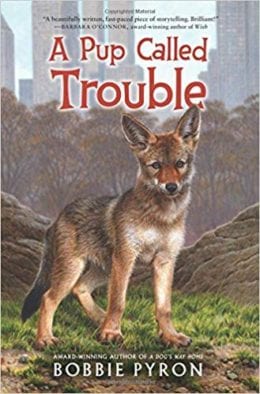 Today I welcome Bobbie Pyron to Best Dog Books, a blog that features interviews with authors who’ve written a canine story for kids or young adults. Bobbie is here to talk about A PUP CALLED TROUBLE which is a middle grade novel published by Katherine Tegen Books for kids aged 8 and up.
Today I welcome Bobbie Pyron to Best Dog Books, a blog that features interviews with authors who’ve written a canine story for kids or young adults. Bobbie is here to talk about A PUP CALLED TROUBLE which is a middle grade novel published by Katherine Tegen Books for kids aged 8 and up. Best Dog Books: What inspired you to write this story?
Best Dog Books: What inspired you to write this story? Best Dog Books: What was the biggest challenge you had writing this story?
Best Dog Books: What was the biggest challenge you had writing this story? Best Dog Books: Is there anything you’d like to share about this book that we haven’t covered?
Best Dog Books: Is there anything you’d like to share about this book that we haven’t covered? Best Dog Books: What advice can you give writers?
Best Dog Books: What advice can you give writers?
